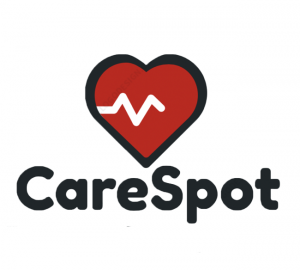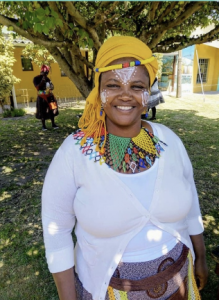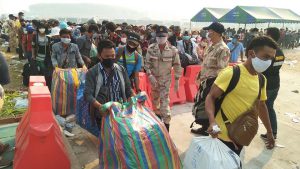Visual maps, photography collections, interactive presentations, theme-specific websites: students experimented with a variety of media and formats to explore the many layers of connections between ideas, practices and realities of our healthcare landscape. The presentations in this collection explore a variety of topics and their intricate connections with broader realities. Visual maps, for example, take visitors in a journey between broad histories and immediate realities, while the spark presentations invite a consideration of how media representations shape our understanding of disease.
Beyond the Biomedical: Syringe Services Programs in Austin, Indiana
In this project, we investigated the journey of one SSP located in Austin, Indiana, a small town near the Kentucky border, which was rocked by an HIV outbreak spread by intravenous drug use in 2015. Through a combination of audio and visual elements, we’ll look beyond the science of SSPs to get to the heart of these intriguing interventions.
CareSpot: Providing Healthcare to Undocumented and Uninsured Individuals in the United States
 CareSpot is an app, a website, and kiosks, that would allow users to locate free and low-cost clinics and vaccination centers in their community. To better understand the challenges faced by undocumented people in the United States, our team researched the history of being undocumented in the US, the barriers to healthcare that exist, and the current resources available to uplift the health of undocumented people.
CareSpot is an app, a website, and kiosks, that would allow users to locate free and low-cost clinics and vaccination centers in their community. To better understand the challenges faced by undocumented people in the United States, our team researched the history of being undocumented in the US, the barriers to healthcare that exist, and the current resources available to uplift the health of undocumented people.
 In order to gain a broad understanding of what COVID-19 coverage looks like, specifically in relation to the vaccine and the the pandemic as a whole, we have curated a series of stories and the photos that have printed alongside these stories from 4 distinct parts of the world: Russia, Pakistan, China, and the southeastern United States. As a whole, this work highlights themes of structural violence, magic bullet solutions, the effects of colonialism, and the role that media portrayal plays in our understanding of global health
In order to gain a broad understanding of what COVID-19 coverage looks like, specifically in relation to the vaccine and the the pandemic as a whole, we have curated a series of stories and the photos that have printed alongside these stories from 4 distinct parts of the world: Russia, Pakistan, China, and the southeastern United States. As a whole, this work highlights themes of structural violence, magic bullet solutions, the effects of colonialism, and the role that media portrayal plays in our understanding of global health
The Story of Khanyisa Peter: Apartheid’s Lasting Influence on South African Health Outcomes

In this project we take an ethnographic approach to understanding the dynamics at play in global health through the story of Khanyisa Peter (Zusakhe Mbasana), who’s life and death reveals how structural violence such as the built environment can have grave implications for health outcomes. While her narrative is amplified by the COVID-19 pandemic, the legacies of Apartheid and in particular the systematic neglect of non-white populations can be traced as the biggest factor of harm.
Maternal Mortality and Morbidity in New Jersey: The Black Woman’s Epidemic
Black women are significantly more likely to die during childbirth compared to white women, as well as to experience other significant adverse health outcomes. This project aims to unravel the historical structures that contribute to these high rates of maternal mortality especially in New Jersey, which is a highly segregated state. On our StoryMap, we have examined how the history of race and medicine and the social determinants of health have contributed to these evident disparities.
Viral Refugees: The Thai-Burmese Border During COVID-19
 Our work aims to better understand and relay the story of Burmese migrants at the Thai-Burmese border, particularly the emergent class of “viral refugees” fleeing COVID-19 from Burma (Myanmar) to Thailand. In order to contextualize why and how this new class of refugees arose, we aim to illuminate Burma’s complex history, structural violence in shaping unique vulnerabilities, citizenhood and the lack thereof, and fragile health infrastructure.
Our work aims to better understand and relay the story of Burmese migrants at the Thai-Burmese border, particularly the emergent class of “viral refugees” fleeing COVID-19 from Burma (Myanmar) to Thailand. In order to contextualize why and how this new class of refugees arose, we aim to illuminate Burma’s complex history, structural violence in shaping unique vulnerabilities, citizenhood and the lack thereof, and fragile health infrastructure.

